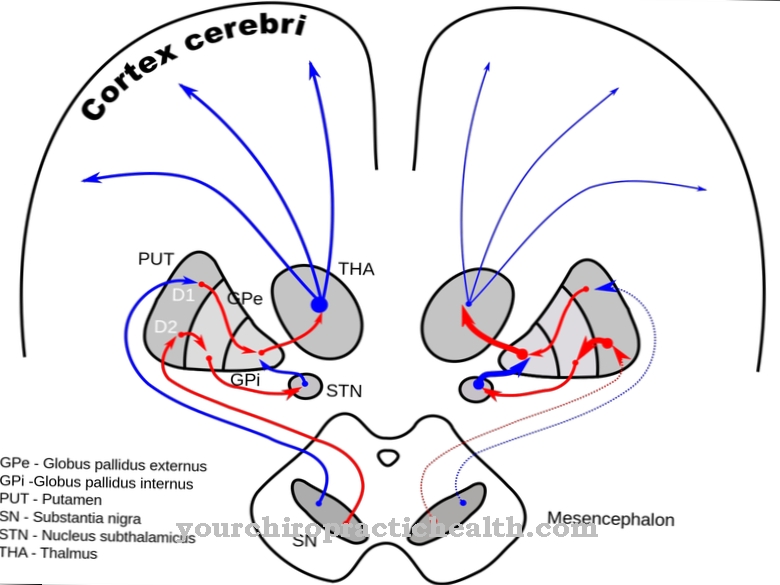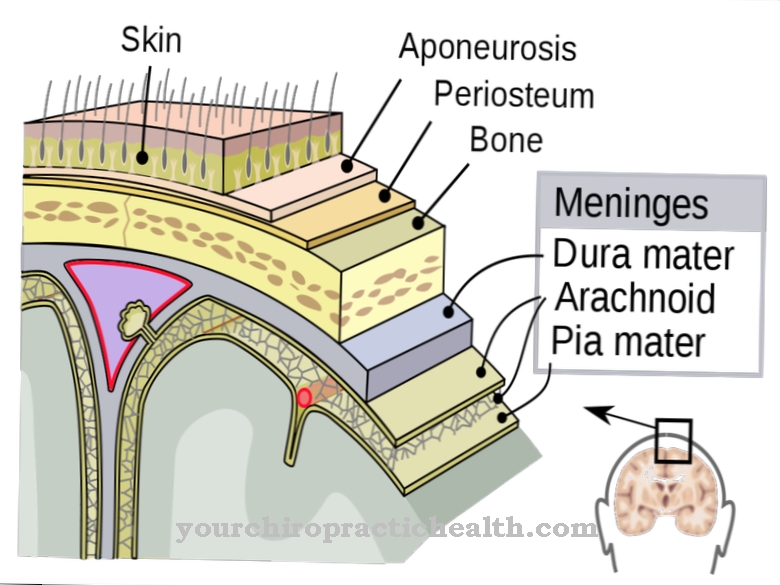The Penile foreskin is a piece of tissue that surrounds the man's glans and thus protects it. This piece of tissue is movable. Especially religiously motivated and therefore not medically indicated circumcisions of the foreskin are in great criticism.
What is the penile foreskin?
The penile foreskin, in medicine Prepuce called, covers the man's glans. It is flexible and protects the glans from drying out, dirt and injuries. As an erogenous zone, it plays a major role in sexuality.
It is significantly more sensitive than the lips or fingertips, which makes it very sensitive to light touch. For this reason, circumcision for religious or hygienic reasons that are not medically indicated is highly controversial. This method has lasting effects on the sensitivity of the penis during the sexual act, because the most sensitive part for the stimulation is removed.
This can lead to problems in the exercise of sexuality, because more difficulties can arise due to the lower sensitivity during orgasm on the part of the man. Penetration can also be more difficult because the foreskin cannot do the job of keeping the glans moist. Penetration, for example into the vagina, becomes much more difficult and can be painful under certain circumstances. The circumcision of the penis seems to have a similar impact as the circumcision of girls and women.
Anatomy & structure
The penile foreskin consists of two so-called leaves. The inner sheet, also known as the inner foreskin, is a smooth mucous membrane. It starts just behind the glans and is a continuation of the skin that surrounds the penis.
The inner foreskin is made up of glands called preputial glands. These produce a sebum secretion that keeps the glans moist and protects it from invading germs. The end of the inner foreskin is a furrowed band that forms a fold in front of the glans and thus completely encloses it. From there there is a transition, which is not visible, to the outer foreskin.
On the underside of the glans there is a visible line of adhesion, the foreskin suture. This merges into the foreskin ligament, which ends in the penis seam. The foreskin has numerous ends of nerves that make it a highly sensitive tissue.
Due to their high level of specification, they react very quickly to temperature differences and contact. In this way, the foreskin is assigned to the man's erogenous zones. The glans, on the other hand, is far from being as sensitive as it is mainly receptive to rough stimuli through free nerve endings.
Function & tasks
The foreskin has several roles and functions.The glands that are found in the inner foreskin produce a secretion that keeps the glans soft and supple. The so-called smegma serves to maintain a stable bacterial flora in the man's intimate area and to protect it from diseases. It protects against infections, which can also affect the urethra, as its task is the natural hygiene of the glans.
In addition, the outer foreskin protects the glans from dirt, injuries and drying out. When making love, the stimulation of the foreskin has an exciting effect, because it contains numerous specified nerve endings that react very sensitively. For this reason, it is considered the man's erogenous zone. During an erection, the foreskin serves as a skin reserve for the extension of the penis.
It also produces a special sliding effect that makes penetration easier. Without it, ten times more force is required, which can lead to pain in the partner. After penetration, the foreskin also facilitates movement during the sexual act. In this way, it counteracts vaginal dryness and reduces friction, which leads to an increase in pleasure for both partners. Circumcision of the foreskin can therefore seriously impair a man's sexuality.
Diseases
The best-known complaints result from a narrowing of the foreskin, a so-called phimosis. The foreskin cannot or cannot be pulled completely over the glans so that an erection is painful.
In boys up to preschool age, the glans and foreskin stick together. This serves to protect against injury and dirt. With increasing age, however, the adhesion dissolves more and more through involuntary erections. But if no solution begins, which should be completed by the age of about six, a surgical intervention must be considered.
In adults, phimosis can be caused by an injury that causes the foreskin and glans to grow together as it heals. This, too, can only be resolved from one another by a surgical procedure. Symptoms such as itching and pain when urinating and erection are problematic. If the inflammation is so advanced that it is difficult to urinate and ejaculate, this is a severe case of phimosis. In this case, the backlog of urine can inflate the foreskin like a balloon.
Treatment is not given to children until symptoms show up or they have reached school age. With mild phimosis, an ointment with cortisone can help. The last step in persistent phimosis is surgical circumcision, which, if performed by a trained medical professional, is a safe treatment option.
You can find your medication here
➔ Medicines for potency and erection problemsTypical & common penile diseases
- Erectile dysfunction (erectile impotence)
- Potency problems
- Premature ejaculation
- Congenital penile curvature












.jpg)



.jpg)










.jpg)
